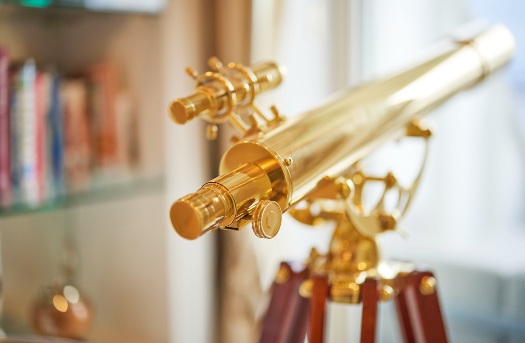Uncovering Secret Tunnels and Signs of Peace at the 38th Parallel
Early one morning we assembled for our tour of Korea’s Demilitarized Zone and the Third Tunnel at the 38th Parallel. As we had learned through lectures on board, the Korean War raged from 1950 – 1953 and even though a cease fire was effected, the South Korean President never signed a peace treaty so, technically the war has never ended. The 38th Parallel was established as the dividing line for the country at the end of World War II when Japan lost the territory and the Allies took charge of the south, while Stalin was given the north as a reward for joining the Pacific war in its final days.
We had a 90-minute trip north of Seoul to reach the perimeter of the border. The closer we got the more barbed wire and sentry boxes we saw along the roadside. Our guide told us that across the water the land we saw was North Korea. At low tide it would be possible for someone to walk across. No pictures were allowed, especially as we got closer to the gate.
Once we reached the gate, a South Korean soldier came on the bus to check all of our passports before giving us permission to proceed. We drove slowly on a zig zag course, carefully avoiding obstacles in the road. Finally we reached the car park of the DMZ and were given a few minutes to go to the viewing area where we could see North Korea in the distance. We had been warned not to take pictures past a yellow line painted on the floor. However, our guide told us that since there were no guards around, we could take pictures at the wall. There was a great surge forward for a photo, but unless you had a very long lens it wasn’t possible to see great details.


There is a strong push for reunification here, which was prevalent throughout the area in signage, architecture and art.

A peace bell hangs in a nearby tower.

A gold statue at the entrance to the tramway says it all.

After taking some photos, we all filed into a small theater for an 8-minute film on the Korean War and a brief explanation of the tunnels that were discovered in the 1970s. These were dug by the North Koreans in anticipation of a surprise attack on Seoul. To date, four have been discovered, but it is believed that there are several more. The Third Tunnel which we were visiting is about 1.1 miles long, 6.6′ high and 6.6′ wide. It is accessed through a tunnel that stretches 600′ to a depth of 240’. Access to the tunnel was though a very narrow tram, three to a seat and hard hats were required. At some points those on the end had to lean in to avoid hitting their heads on the ceiling.

It was a little eerie going down the slope and very cramped. It took about 5-6 minutes to reach the actual entrance to the tunnel. We exited the tram and began to traverse the tunnel on black rubber mats. Very few of us could walk the entire way without bending over (the one time it is good to be short !) and there were lots of “clunking” sounds as the hard hats struck the metal bars reinforcing the tunnel. We were told that these tunnels could accommodate 30,000 soldiers an hour carrying light weapons. The actual Military Demarcation Line at the end of our walk was blocked with three concrete barricades. We could see light behind a small window and beyond that was North Korea. There is still a concern that the undiscovered tunnels could be used in an attack on the south and the soldiers here are always on the lookout for evidence of new ones.
Our final stop after returning above ground was the Imjingak Park. It was built to console Koreans from both sides who are unable to return to their hometowns because of the division. It’s a very emotional and surreal location. On one side there was a large area filled with tents, and people with flowers celebrating some sort of festival, as well as a children’s playground. Near the parking lot was a stone altar where South Koreans observe funerals for repatriated remains from the North and the Freedom Bridge where POWs and soldiers returned from the North. Exploring away from the rest of the group, we even saw a beautiful monument to the United States.



There were some very interesting planes and tanks on display and we had a quick look before hurrying back for an on-time departure.


Lunch today was Korean Fusion – no idea what that means. It was served in a small restaurant not too far from the DMZ and was quite nice although most things were unidentifiable to us. Following that we had a quiet ride back to Incheon.
On Wednesday we thought we might walk in a nearby park but even that seemed too far to move after the last couple of days. Instead, we had lunch on a sunny, deserted pool deck and then walked upstairs. The rest of the afternoon was whiled away reading next to the pool. An 8:00 PM face-to-face inspection was our last connection with Korea and we sailed at 11:30 towards China.
Ready to learn more?
Determine whether life aboard The World is the right fit for you. Talk to one of our Residential Advisors today to learn more about this unique lifestyle, details of upcoming Journeys and Expeditions, and ownership opportunities.



